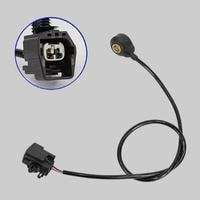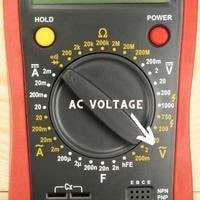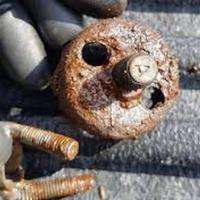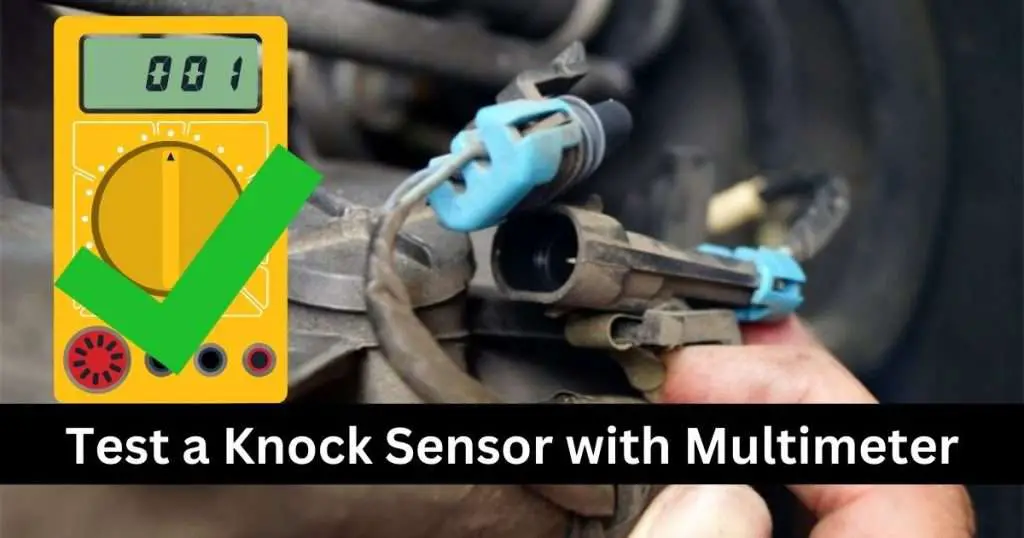Have you ever heard the knocking sound from your engine? It’s disturbing! Right? We will recommend you check the knock sensor using a multimeter so that we can evaluate its working. This post will discuss how to check the knock sensor with a multimeter.
Knocking is the abnormal combustion that happens inside the engine. It can badly damage the engine components. So, in this case, a knock sensor can save your engine from stopping knocking.
The knock sensor is located on the engine block, cylinder head, or intake manifold. It is the device that detects the vibration of the engine cylinder due to knocking. And then, it sends an electric signal to ECM (ENGINE CONTROL MODULE).
Experts recommend you check your knock sensor regularly to ensure it works correctly.
Let’s understand in detail.
Multimeter
A multimeter is a device that measures different electrical properties such as resistance, voltage amperage, capacitance, and more.
Table of Contents
ToggleHow to test knock sensor with a multimeter
- Set your multimeter to resistance or continuity mode to test a knock sensor.
- Place the multimeter’s red probe on the knock sensor wire. Place the black probe on a ground point in your car.
- Your multimeter will display OL(over loop) if there is no continuity in the sensor.
- You’ll see around 10 ohms on your multimeter if the knock sensor is fine.
- Also, test the voltage between two sensor ends by knocking a metal near the sensor.
I am explaining here a step-by-step guide on checking the knock sensor with a multimeter.
Let’s understand the step-by-step guide below to check the knock sensor with a multimeter:
Test 1: Measure the resistance of the knock sensor
By measuring resistance, we can identify a fault in the knock sensor. If the circuit is damaged on your multimeter, you’ll see a drop or increase in resistance, then the ideal range.
-
Remove the engine hood
First, you need to park your car on level ground. Then, press the emergency brake and turn off the engine. Open your engine hood and then turn on the engine. Opening the engine hood when the engine is off is safer to prevent possible injuries.
-
Locate the Knock Sensor

After the first step, you need to locate the knock sensor. A knock sensor is usually found on the engine manifold. It’s mounted beneath the intake manifold. It can also be located in the middle of the engine. The knock sensor is usually connected with a cable harness, often coming from the top.
But this location may be a little different for different cars of other manufacturers. And in this case, you should consult your repair manual if needed.
Here is an image of the knock sensor location that may help you to locate it.
-
Disconnect the sensor
Now spot the wire and disconnect it from the knock sensor. You need to pull the base of the harness to the point where it meets the sensor.
-
Connect multimeter probes to the sensor
Now grab your multimeter and connect the multimeter’s red probe to the knock sensor. Connect the black probe to any ground point. It could be your battery’s negative terminal or a ground bolt on the chassis.
-
Evaluate results from multimeter reading
If you see continuity and read more than 10 OHMs, then it’s a piece of good news for you. Your knock sensor is excellent. Otherwise, if the knock sensor wires are damaged, you’ll see OL (open line) on your multimeter, which means an incomplete circuit path.
Also, the resistance between both ends of your knock sensor should be around 100 kΩ.
Test 2: Measure the voltage of the knock sensor
In this test, we measure the voltage of the knock sensor and compare it with the manufacturer’s recommended range. Follow steps.
-
Set Multimeter

Set your multimeter to the AC voltage setting symbolized as VAC or V〜 on the dial.
-
Fix the sensor
Fix your knock sensor between an iron vice (a device that holds equipment in its jaws for testing). You can use any metal object to hold the knock sensor.
-
Place multimeter probes on the sensor
Place the red probe inside the wide upper hole of the sensor and the black probe in the ground part (where the sensor joins the vice).
Strike the metal holder (vice) near the sensor with a hammer or any metal that can produce a knocking sound. You’ll see a variable voltage reading on the multimeter.
-
Evaluate Results from multimeter reading
Knock the supporting metal multiple times and record the reading. If your multimeter records over 1 volt, then your sensor is fine. While if the multimeter reads below 1 volt, the sensor is faulty and about to expire.
Sensors used in other car models can have different voltage and resistance ranges. Check the manufacturer’s manual to confirm your sensors are within the recommended range.
Symptoms of a bad knock sensor

Some common signs are when your engine knock sensor is getting bad.
- You will hear an audible knocking sound continuously from your engine.
- Your engine warning light will get on.
- You will see a lack of engine power.
- You will face more fuel consumption than acceleration.
- ECM will continually store trouble codes.
In such a situation, you can primarily blame the knock sensor for the problem. But for sure, you can detect it by using a multimeter.
The multimeter offers accurate results so that you can be sure about the bad knock sensor. It eventually saves your engine from damage and also more fuel consumption.
When to replace your knock sensor?
Test your vehicle’s knock sensor with a multimeter. The knock sensor is dead if the multimeter displays OL while testing continuity. In this case, this is the time you have to replace your knock sensor immediately.
How long can I drive with a bad knock sensor?
You may want to destroy your engine and its performance if you’ve identified a faulty knock sensor and still using it. However, if your vehicle has two knock sensors installed, you can drive a few hundred miles if one of the sensors is dead.
Conclusion
If you continually use a bad knock sensor, it can turn your engine into a pinging engine. Consider changing your bad knock sensor when you identify a fault in it. Testing a sensor with a multimeter makes it easy to decide whether to change a sensor. Replacing a bad knock sensor:
- Ensure safe driving.
- Saves from more fuel consumption.
- Increase the efficiency of an engine.
Related Guide:







One Response
Thank you. This is a good report.